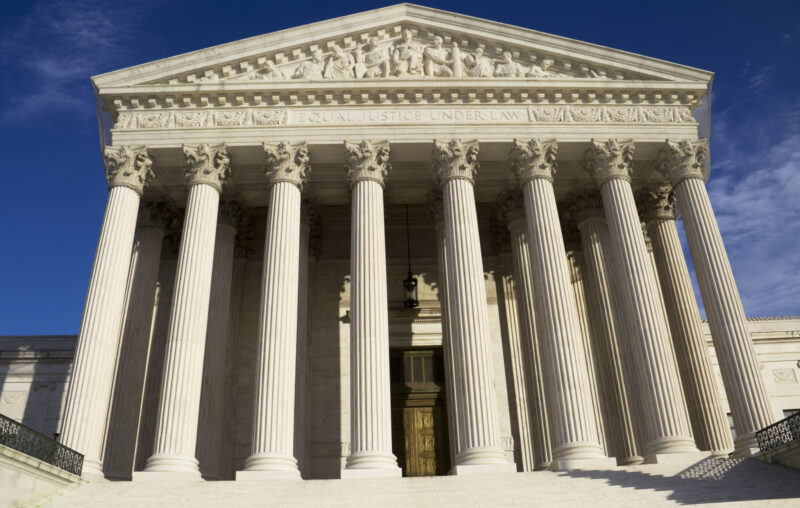Downsizing the Administrative State

The recent Supreme Court decision, West Virginia v. EPA, which limits the EPA’s ability to define its own parameters, revitalized debate over how much discretion bureaucracies have to develop and implement policy. When the court ruled that bureaucratic latitude to form regulations, absent clear legislative guidance, overstepped legal bounds, the political sphere exploded. Senator Jerrod Brown asserted the decision would reverberate “throughout our government,” Daren Bakst maintained the decision “helped to protect the voice of the American people and restore the nation’s republican form of government.” The SCOTUS ruling highlights important questions about the form of the bureaucratic state’s continued existence. In 2019 Congress passed 105 regulations, while administrative agencies enacted 2,964. Decades of this trend bring us to a point where, in 2020, the estimated regulatory burden to the American people totals $2 trillion dollars, more than all corporate and income taxes combined; an annual regulatory tax burden of $14,455 per US household.
The Founders gave each of the three branches of government a distinct role in Articles I, II, and III of the Constitution. Fearing a branch with the capacity to both develop and implement policy would threaten Americans’ fundamental civil liberties, they tasked the legislative branch with developing reasoned laws and legislation, and purposefully gave the executive branch minimal influence on the legislative process. Madison argued that breaking the separation of powers would constitute “the very definition of tyranny.” Today we call that Founding principle the nondelegation doctrine, that delegating broad rulemaking authority to the executive branch goes against the spirit, and even the letter, of the Constitution.
The progressive movement at the turn of the 20th century ushered in the beginnings of an administrative state. Progressive intellectuals, pointing to the efficiency of Imperial Germany, wanted an administrative state to solve a variety of social ills. From averting the monopolization of markets to preventing the consumption of alcohol, progressives sought a state remedy. Richard T. Ely founded the American Economic Association as a mechanism for extolling the ideas of progressive intellectuals. Its initial 1885 Statement of Principles defined “the state as an agency whose positive assistance is one of the indispensable conditions of human progress.”
Facing a fundamental difficulty of implementing their reforms for an all-encompassing state while still adhering to the United States Constitution, progressives made two arguments. First, the Founders’ Constitution no longer fit the times; and second, the Founders’ fear of centralized power lacked relevance with the appropriate separation of politics from governance. Progressives argued that an administrative state separating the politics of the legislative, judicial, and executive branches from the bureaucratic administration of legislation would accomplish that task. It also meant a bureaucracy independent of the people, and unaccountable to them.
This philosophical framework guided those behind the administrative state from the beginning, and became more and more influential as the administrative state grew within American society. Progressive leadership created numerous bureaucratic agencies, believing they should have independent, discretionary authority to determine policy. These efforts exerted increasingly large effects on the direction of the United States. Capturing the vastness of today’s administrative state, the Administrative Conference of the United States estimates there are between 78 and 137 independent agencies, and 174 to 268 executive agencies.
Growing congressional willingness to abdicate rulemaking authority to bureaucratic agencies, and the Court’s willingness to go along, have led to a vast expansion of the administrative state. Two particular judicial-branch developments greatly expanded the administrative state’s authority: the Chevron and Auer cases. The Chevron Deference came from a 1984 case, Chevron U.S.A, Inc. v. Natural Resources Defense Council, and required that courts defer to agency interpretations of statutes. The Auer Deference arose from a 1997 case, Auer v. Robbins, that expanded upon the Chevron Deference to require judicial compliance with the agency’s rule interpretation. Together, these two cases allowed SCOTUS to essentially abdicate its role of interpreting the constitutionality of administrative acts by the executive branch.
Many now argue the need for Congress to reestablish the separation of powers. Before Chevron and Auer, the Administrative Procedure Act of 1946 expressly ordered courts to review de novo administrative interpretations of law. Yet even with discussion about legislative proposals that would rein in the administrative state, such as the recently reintroduced REINS Act and the incorporation of sunset laws, little action has emerged. After passing the House, a recent attempt to reinstate the separation of powers was left untouched by the Senate, suggesting any changes regarding “unconstitutional” delegation of powers must come from SCOTUS itself.
The Skidmore and De Novo Doctrines provide two alternatives to the Chevron Doctrine. The Skidmore Doctrine takes into account an agency’s logical consistency in determining whether to uphold its interpretation. Courts decide on whether to defer “to an agency’s interpretation based on several factors, including the thoroughness of the agency’s interpretation and its consistency with prior pronouncements.” More restrictive than the Skidmore Doctrine, the De Novo Doctrine requires courts to decide the issue “without reference to any legal conclusion or assumption made by previous courts to hear the case.”
Most lower appellate courts today apply the Chevron Doctrine, but either doctrine would radically change the extent of the administrative state. From 2003 to 2013, in 1558 cases when a district court could have applied the Chevron Doctrine, it did so 1166 times. Courts citing Chevron in their decisions side with the agency 10 percent more often than when they cite no standard, 20 percent more often than when they cite the Skidmore standard, and 40 percent more often than when they cite the De Novo standard. The ideal doctrine will depend on the case in question, since justifications exist for each. What matters is transitioning away from the Chevron Doctrine and returning to greater separation of powers and accountability.
In American Hospital Association v. Becerra, SCOTUS demonstrated a shift towards the Skidmore Doctrine by heavily relying on it when unanimously rejecting the US Department of Health and Human Services’ change in how it calculated hospital reimbursements for prescription drugs. Kavanaugh invoked the Skidmore Doctrine to write the dissenting opinion in Becerra v. Empire Health, asserting that “HHS’s 2004 interpretation is not the best reading of this statutory reimbursement provision.”
To remove the Chevron Doctrine entirely from the federal judicial system, SCOTUS needs to do more than just cease its usage in the high court. It already decides seventy-five percent of cases pertaining to agency authority without using Chevron. To more fully restore the separation of powers intended by the founders, SCOTUS must soundly repudiate the Chevron Doctrine, and assert the primacy of an alternative.
A few SCOTUS members have already strongly criticized the Chevron Doctrine. In 2016, Justice Gorsuch argued Chevron “permit[s] executive bureaucracies to swallow huge amounts of core judicial and legislative power and concentrate federal power in a way that seems more than a little difficult to square with the Constitution of the framers’ design.” Similarly, Justice Kavanaugh supports “reigning in” the Chevron deference. Justice Thomas even called the Chevron deference’s premise “fiction.” More justices should follow their example, denounce Chevron, and bring the scales of justice in balance with the principles set down by the Founders.












